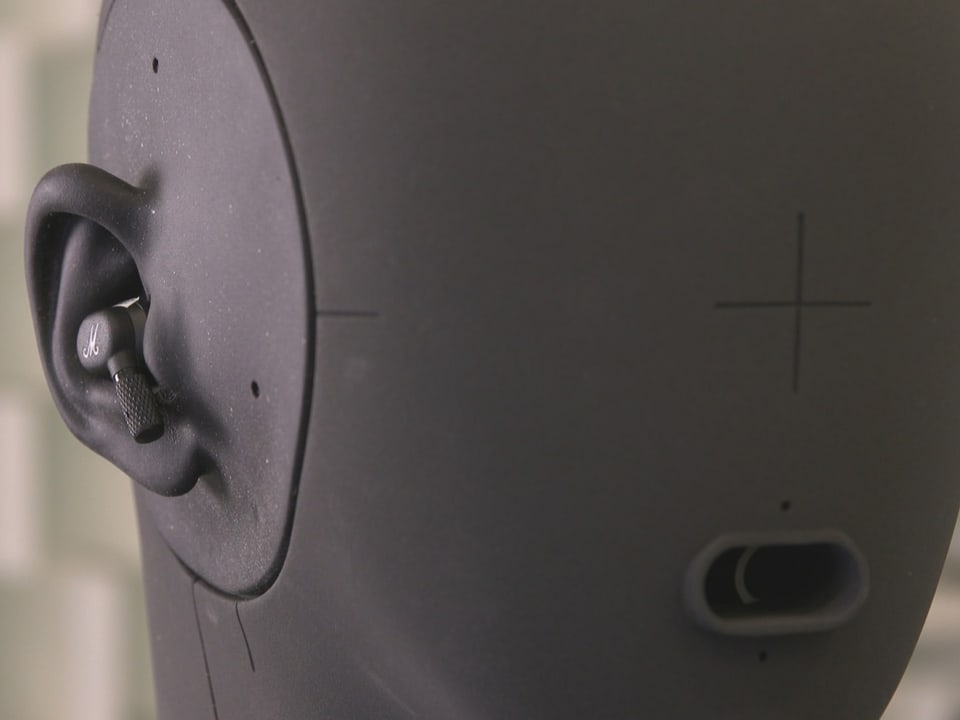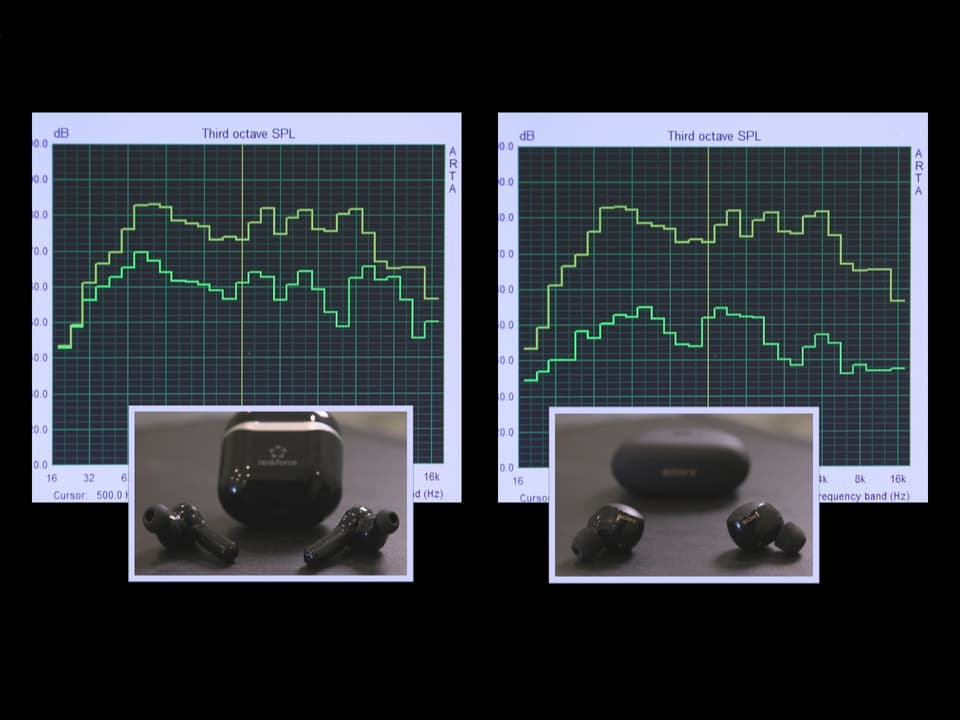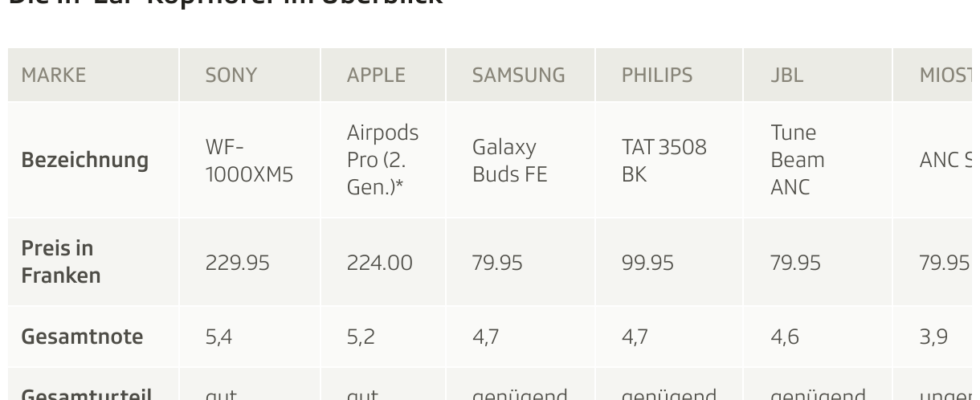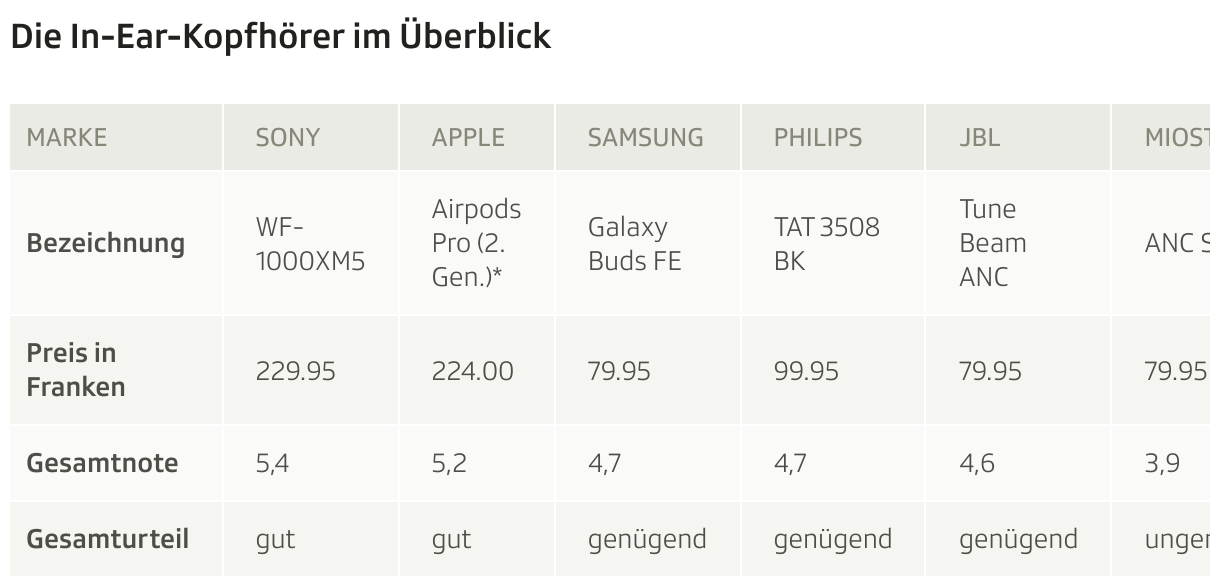Contents
“Kassenrutsch” had eight in-ear headphones with noise-cancelling functions tested. Two models swing above.
On a loud train or tram or at work, put the plugs in your ears and the noise will be far away. Noise canceling makes it possible. What works with large over-ear headphones also works well with many small in-ear headphones.
“Kassenrutsch” had eight well-selling in-ear models with noise cancellation tested in the laboratory, with prices ranging from 60 to 230 francs. This shows that the best technology has its price. But if you make slight compromises, you can get suitable headphones for around 70 francs.
Simple silicone attachments make the difference
Amazing: It’s not high-tech, but the right attachments that have the decisive influence on noise reduction. This is what test leader Michael Kogel from the Müller-BBM test laboratory says: “If the receiver doesn’t sit properly in the ear, the best noise suppression isn’t of much use. Because the noise penetrates your ear from outside.” The sound also depends on a good fit in the ear. Kogel therefore recommends extensively trying out the attachments of different sizes supplied.
Noise canceling: Not everyone does it equally well
The laboratory measured how well the models attenuate ambient noise using an artificial head.

Legend:
A microphone in the ear of the artificial head measures how much of the noise still reaches the ear when noise canceling is switched on.
SRF
The in-ear headphones are inserted into the artificial ears and a steady noise is played from a loudspeaker. A microphone in the ear measures how much of the noise still reaches the ear when noise canceling is switched on. The graphic below shows the best and worst models.

Legend:
The top line shows the volume of the noise, the bottom line shows how well the noise cancellation reduces the noise. The differences are clear.
SRF
Test winner Sony WF-1000 XM5 ahead of Apple Airpods 2nd generation
The model WF-1000 XM5 from Sony performed best with a grade of 5.4. It impresses with its sound quality, operation, battery life and offers the best noise reduction.
The Apple Airpods (2nd generation) follow closely behind. The sound is just as good as the Sony, and the noise reduction is almost as good. The battery life is only average at 6 hours 40 minutes.
Price-performance winner Samsung Galaxy Buds FE
For the best quality, you need to dig deep into your pocket: Sony and Apple both cost over 220 francs. In contrast, the price of just under 80 francs for the Galaxy Buds FE from Samsung almost seems like a bargain. The noise reduction receives a grade of 5.1, the sound 4.7.
Models from Renkforce, Marshall and Miostar “inadequate”
Renkforce RF-NCE-500, purchased for 60 francs from Conrad.ch, has a miserable sound (grade 2.7) and ends up in last place. Marshall Motif ANC for 150 francs also doesn’t achieve a “sufficient” grade in any of the four sound ratings (see table).
The Migros own brand Miostar is also just “unsatisfactory” in terms of sound and therefore in the overall rating. Supplier Conrad, manufacturer Marshall and M-Electronics (80 francs) just want to sell off their models. Marshall speaks of a discontinued model, but it is still widely available. M-Electronics writes that they want to add an improved model to their range in the future instead of the ANC S1.

